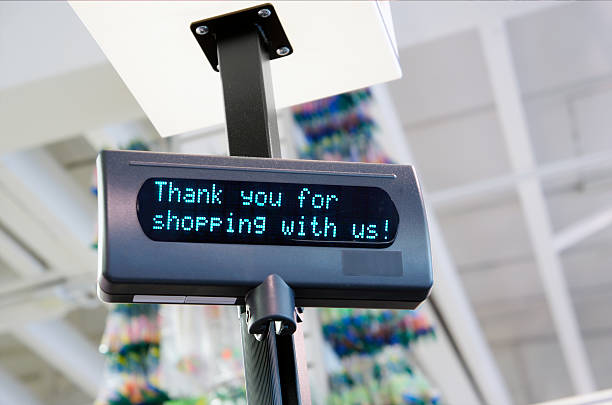Efficiency of the supply chain is now a key to business success in an age where e-commerce requirements of retail groups are increasing and where the possibilities of change are very fast. Warehousing used to be a back-end operation that was a parking lot of things but it has evolved into a strategic location where technology, automation and intelligence meet. Enter the smart warehouse solutions, the new generation systems and tools that are to enhance the process of the functioning of warehouses, especially the parameters of managing the inventory and labeling. In those companies where a retail display manufacturer and retail display company have worked together very closely, the solutions provide an avenue to align production, logistics, and retail execution together.
Using high technologies like IoT, RFID, AI and warehouse management software (WMS), companies will be able to minimize human error, enhance visibility and turnaround time significantly. This paper discusses the role of smart warehouse systems, which are revolutionizing the sphere of retail logistics both at the level of efficiency and competitive advantage.
Learning about the Smart Warehouse Solutions
Smart warehouse solutions can be considered as the process of digitization and automation of classical warehousing activities. Such solutions combine a number of technologies that help to automate the processes of reception, storage, order selection, and labeling. The actual-time delivery of information among inventory software guarantees that each product is traced precisely both upon arrival and shipping.
Smart warehousing is all about automation. Such technologies as robotic picking systems, autonomous mobile robots (AMRs) and voice-guided systems allow the use of manual force and speed and accuracy are maximized. The IoT sensors monitor the environmental situation and the status of the equipment, and the AI-based analytics are used to streamline the layout of storage, replenishment schedules and employee shifts.
Smart warehouses also remove the bottlenecks arising due to the traditional manual processes in relation to labeling. Dynamic labelling creation, printing and application uses current data to eliminate errors and be compliant to regulation. They are especially favorable to those companies who cooperate with a retail display manufacturer because the movement of the products between the retail stores and warehouses must be well-organized and precise to stick to the retail display time frame and specifications.
Automation and Data in Inventory Management
Any warehouse can be nothing without effective inventory management, and it is in this area where it has recorded massive changes through smart warehouse solutions. There will no more be a barring of spreadsheets and legacy software to monitor stock. Real-time inventory tracking systems based on RFIDs, barcode scanners, and AI algorithms help to keep track of the supply chain across smart warehouses today.
Automated technology also keeps track of the stock in real-time, there are alerts when the stock becomes low and even automatic re-orders can be received. This will reduce chances of out-of-stocks or excess inventories which may have dire consequences on the efficiency and profitability of the operations. Forecasting demands tools are based on past sales, seasonal sales and other factors that enable them to plan better on what is ahead in the market.
The information obtained is also applied in minimizing carrying costs and streamlining storage. AI will have the ability to suggest to a customer on the storage location of what and where depending on frequently used, the size, and compatibility with other commodities. Such optimisations will equal quicker picking at lower labouring expenses, better order accuracy, all major aspects in delivery within a limited time frame and deliver contracts to retail traders and display experts.
Labeling Precision for Retail and Regulatory Compliance
Labeling is an important facilitator that achieves accuracy, traceability, and compliance in the modern warehouse activities. No matter what you are labeling whether it is products, cartons or pallets the fact that you are getting labels printed and applied efficiently and without error is essential. The smart labeling systems with the help of warehouse management software can be used to produce labels automatically according to shipment details and customer needs or legal regulations.
In companies that have to supply products to stores or liaise with a retail display manufacturer, the accuracy made on labels is not a choice. Labels should be of right format according to the product specifications and should bear proper barcode or QR code and should be of the industry standard. Labels out of sync or missing may cause shipments to be rejected, cause noncompliance, or cause products to take longer before reaching shelves.
Applications that ensure fast label accuracy include mobile label printers, conveyor-mounted applicators and print-and-apply automation stations which are used in modern smart warehouses. Customisation of labels in real time is also possible, to reflect localised pricing, or promotions, or customer-branding made possible by centrally managed data management. This is an important factor when the end product displays items to be located in the retail store.
Also it is easily handled by implementing smart labeling systems whereby most global standards are followed like GS1 and also followed locally like in pharmaceuticals, food and even electronic sectors. Such systems would have every needed information on every label thus providing minimum risk and maximum tracking of warehouse level to point-of-sale.
Use of Retail Display Manufacturers and Supplies Chain partners Integration
Integration with other more or downstream supply chain partners is one of the key virtues that make smart warehouse solutions stand out. A case example is manufacturers who are in close partnership with a retail display manufacturer ought to remember that warehouse systems should have the ability to synchronize the delivery, labeling of product and shipment schedule with the retail marketing detection and floor resets.
Smart warehouse platforms are able to be directly interconnected to the manufacturing execution system (MES), retail planning program, and also to the third-party logistics supplier (3PL). Such end-to-end integration means improved communication, decrease in lead times and visibility across the entire production and delivery processes.
Take an example of a retailer that has decided to have a national roll out of a new seasonal display. The warehouse has to facilitate timely picking, appropriate labeling and synchronization in delivery of its products to hundreds of stores. An intelligent warehouse system has the capability to directly connect with the retail display manufacturer to synchronize the inventory deliveries with the display pieces so that at the time of launch, there are no inventory issues of out of stock or mismatch.
Such a degree of coordination enhances the relationship between suppliers and retailers, raises service levels, and facilitates omni-channel fulfillment techniques that have become the standard in current retailing.
Trends of Smart Warehousing and Labeling in Future
The contour of warehouse technology is expected to change very rapidly and some of the emerging trends can be expected to take smart warehouse technologies to the next level. The predictive maintenance, labor planning and demand forecasting will have AI (Artificial Intelligence) and ML (Machine Learning) at a greater scale. The capabilities will assist the warehouses to predict issues ahead of time before they happen so that the downtime and service reliability can be improved.
AR is in the experimental stage and is being tested in hands free picking and training to accelerate the learning process of new labor and also decrease the number of errors that occur in picking. Known secure, un-tamper alternatives are also being researched, such as blockchain-based solutions, most useful when the product has labeling data that needs a secure and un-tampered record of its movements.
The other rising attention is sustainability. Green labels, recyclable wrapping, and efficient automation mechanisms are emerging as companies in charge of realizing ESG plans. Smart warehouses will also start taking carbon footprint into consideration during routing and storing decisions in reducing the environmental impact on the supply chain.
The tech is on the way to becoming more viable, so it can only increase the value that smart warehouse solutions create as they become more mature. Combined with trusted partners such as a retail display manufacturer, businesses can develop an optimized eco-system that promotes innovation, growth and sustainability in each stage of the product life.
To sum up, smart warehouse solutions are transforming the way businesses approach inventory, process labels, and work with partners in the retailing chain. Intelligent systems give the visibility, control, and accuracy required in today’s fast moving markets whether it is fulfilling orders of e-commerce or collaborating with a retail display manufacturer in order to merchandize in-store. With the consistent rise in technology, smart warehousing is sure to be central to the process of supply chain optimization- providing the business with power and flexibility to be agile, accurate and match its consumers needs.

